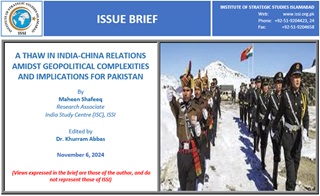Introduction
On October 21, 2024, the Indian Foreign Secretary and on October 22, 2024, the Spokesperson of Chinese Foreign Ministry announced that India and China had reached a patrolling agreement along the disputed border in the Himalayas.[1] Both highlighted the triumph of bilateral military and diplomatic efforts to resolve border disputes. The relations between India and China have been tense since the Galwan Valley standoff in 2020. This was a significant escalation since Indo-China War of 1962. Despite the tensions, the two countries have held 21 rounds of Corps Commander Level meetings seeking complete disengagement along Line of Actual Control (LAC) and restoration of peace.[2] This demonstrates that New Delhi has maintained an interest in minimizing tensions and seeks a stable relationship with Beijing. As per the agreement, Chinese and Indian troops have pulled back from Depsang Plains and Demchok, reverting to their pre-May 2020 positions. On Oct. 31, the day of Diwali, the Hindu festival of lights, Indian and Chinese troops exchanged sweets along the disputed border, which illustrates that the situation at the LAC is improving significantly towards peace and normalcy. However, this contrasts with India’s endeavours in the Indian Ocean and the U.S.’s ‘Indo-Pacific Strategy.’















